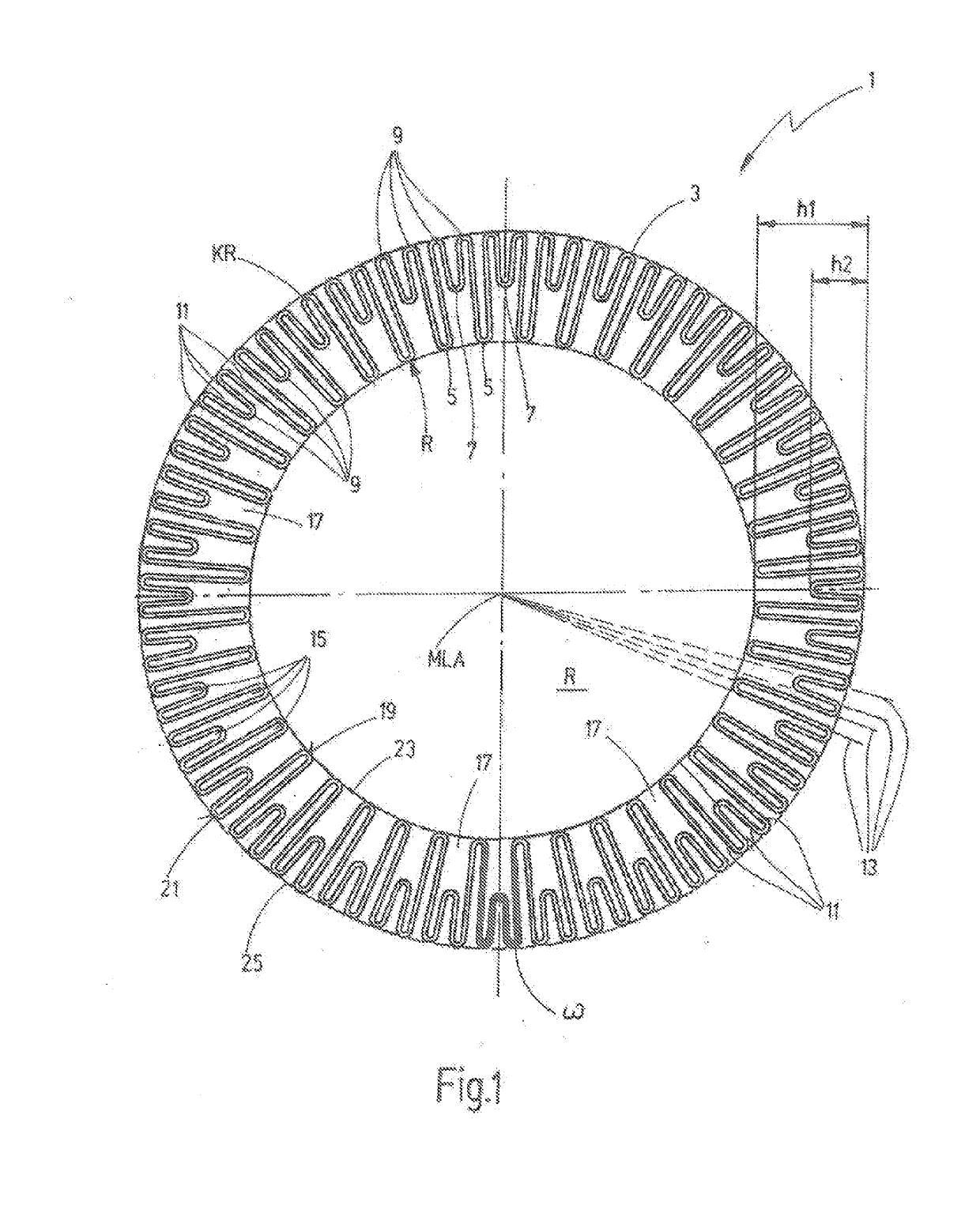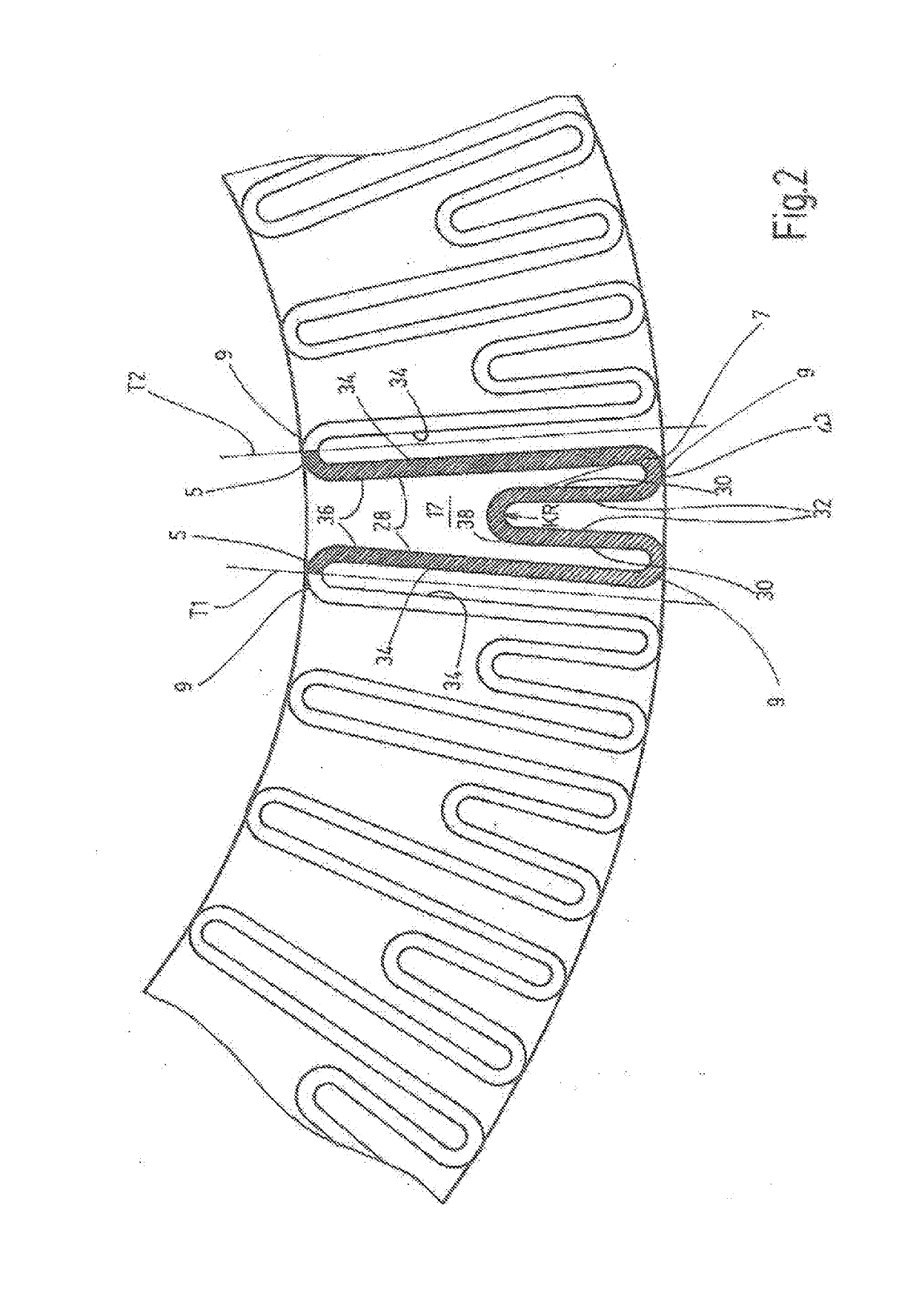Filter element
a filter element and filter element technology, applied in the field of filter elements, can solve the problems of limiting the amount of usable space available in the fluid system, and reducing the service life of the filter element, so as to minimize the danger of undeired electrostatic discharge
- Summary
- Abstract
- Description
- Claims
- Application Information
AI Technical Summary
Benefits of technology
Problems solved by technology
Method used
Image
Examples
Embodiment Construction
[0030]For the sake of simplicity, the filter element is depicted wholly or in part in FIGS. 1 and 2, in each case only in a front-end top view. The filter element as such routinely has a cylindrical shape, as is shown, for example, in the previously cited prior art documents DE 10 2004 005 202 A1 and WO 2009 / 089891 A1. In this respect, in terms of the overall configuration of the filter element, reference is made to the relevant documents.
[0031]FIG. 1 also shows a filter element 1 including a filter medium 3 having a multilayer structure. The filter medium 3 includes first and second filter pleats 5, 7 of varying first and second pleat heights h1, h2, respectively. The filter pleats have a sequence of first filter pleats 5 having a first pleat height hi alternating with second filter pleats 7 having a second pleat height h2. In this way, more effective filtering surface is available than in the case of filter elements, in which the filter pleats have a uniform pleat height. Upon flo...
PUM
| Property | Measurement | Unit |
|---|---|---|
| height | aaaaa | aaaaa |
| length | aaaaa | aaaaa |
| curvature radii | aaaaa | aaaaa |
Abstract
Description
Claims
Application Information
 Login to View More
Login to View More - R&D
- Intellectual Property
- Life Sciences
- Materials
- Tech Scout
- Unparalleled Data Quality
- Higher Quality Content
- 60% Fewer Hallucinations
Browse by: Latest US Patents, China's latest patents, Technical Efficacy Thesaurus, Application Domain, Technology Topic, Popular Technical Reports.
© 2025 PatSnap. All rights reserved.Legal|Privacy policy|Modern Slavery Act Transparency Statement|Sitemap|About US| Contact US: help@patsnap.com


